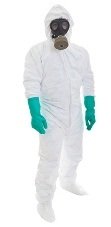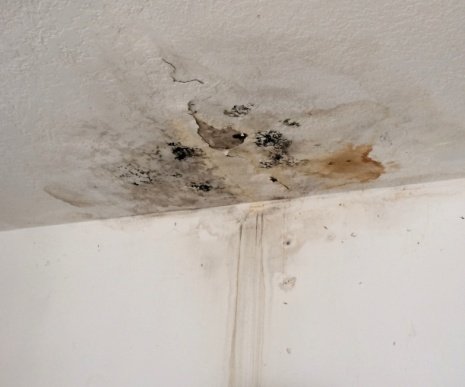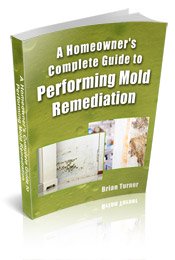Find a Mold Specialist Now
Click or Call, Toll-Free 24/7
Killing Black Mold
Killing black mold is a multi-step process, and it is necessary to learn how to treat black mold correctly in order to protect your health and prevent future mold problems. The problem with black mold is that many people don’t realize how serious the health implications can be, and so they try to clean up the mess without knowing exactly what to do. Removing black mold without following the proper steps may result in black mold poisoning.
7 Step Process to Clean Up Mold

If you want to know how to treat black mold, there are seven steps that should be followed:
- Personal Protection: When killing black mold, you need to wear proper personal protection, such as a face mask approved for mold, a tyvek suit and rubber gloves.
- Quarantine the Area: In order to prevent cross contamination, the first step is to use plastic sheets and duct tape to close off the area. This will prevent the mold spores from moving into other rooms in the house. Also, use a negative air machine while working.
- Fix the Water Problem: One of the most important steps in the clean up process is to find the source of the water leak, and fix it to prevent future dampness. If the water problem is not fixed, then it may result in mold continuing to grow.
- Remove Porous Materials: Start the actual cleanup process by getting rid of any porous materials that may contain mold spores. This includes drywall, carpet, linoleum, paint, insulation, curtains, or any other similar type of material. When you learn how to treat black mold, you will understand that these items should be thrown away and replaced with brand new materials. It is nearly impossible to remove all of the mold spores from within the fibers.
- Vacuum and Scrub Everything: After the porous materials have been removed, the next step to killing black mold is to use a HEPA-filtered vacuum to clean up the mold, and then scrub down the affected area. A wire brush should be used to get a deep clean, and be sure to run the vacuum often. You should also HEPA-vacuum again after sanitizing.
- Sanitize: When you learn how to treat black mold, you will find out that the sanitization process is an important step to kill any remaining mold spores. Bleach or other homemade cleaners will not work; you should use a high quality biocide agent.
- Clean the HVAC System: When a building contains mold, it is likely that some of the spores have moved into the heating and air conditioning system of the building. When you are killing black mold, it is necessary to clean and sanitize the HVAC system in order to prevent mold spores from moving throughout the house. The Environment Protection Agency recommends that if you have mold in your HVAC system, you hire a professional remediation company to remove it. Its just too big of a job for the average homeowner.
- Dry and Rebuild: After the cleanup process is complete, the sanitized area needs to be totally dry before the rebuilding process begins. If you rebuild while the area is still damp, it may result in future mold problems. A dehumidifier can be used to pull out the moisture, and fans can also be setup if needed. Brand new materials should be used for this process.
All of these steps need to be following when you are killing black mold, skipping one or two steps can result in continued mold growth, which can put you and your family in danger of mold toxicity.
You can learn how to treat black mold on your own, but it is usually best to consult with a professional in order to determine the best treatment plan available. A professional can advise you on steps that should be taken for your individual situation. After the cleanup is complete, you need to have the area tested to verify that all the mold has been removed. The testing process will verify that the mold spores have been completely removed, so that you don’t have to worry about the mold continuing to grow.
What to Expect from a Consultation with a Mold Removal Specialist
Some people hesitate to consult with a mold removal specialist because they aren’t sure they really need professional help and they are afraid they might be overcharged for the work. Those are valid concerns, but we recommend scheduling a consultation with a specialist because you have much to gain from it.
- Expect a mold removal specialist to offer a free consultation, with no obligation on your part.
- Expect a specialist to inspect your home for mold, possibly locating mold you haven’t seen, letting you know all of the places you will need to remove mold.
- Expect a written proposal explaining what work needs to be done to remove all mold from your home.
- Expect information and advice about safety issues and the most effective techniques for removing mold from your home.
Since a consultation is free, there’s no risk involved. To locate a mold removal specialist near you, follow this link.
Return From Killing Black Mold To Our Getting Rid Of Black Mold Page
Black Mold Health Symptoms Home Page






